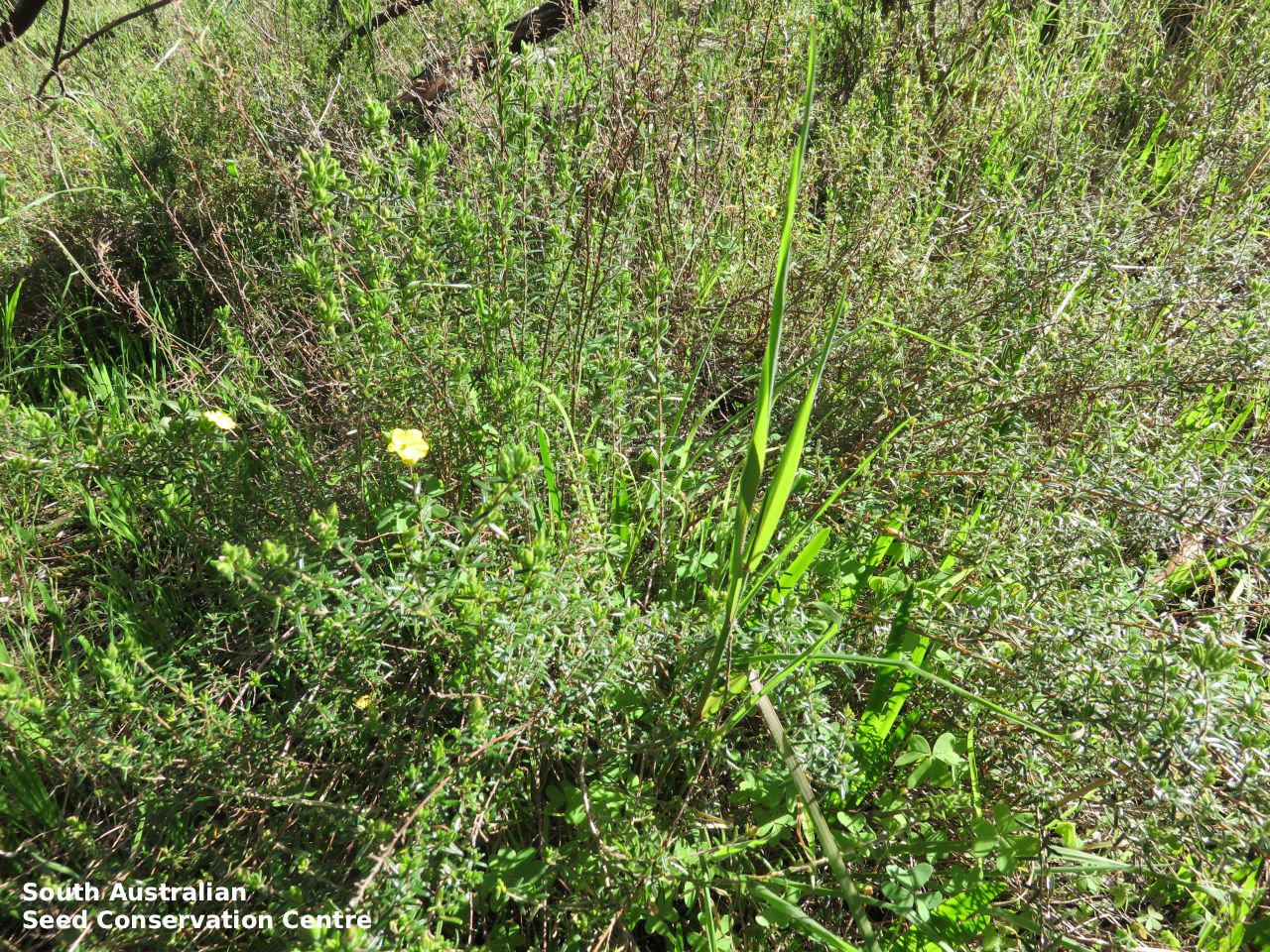
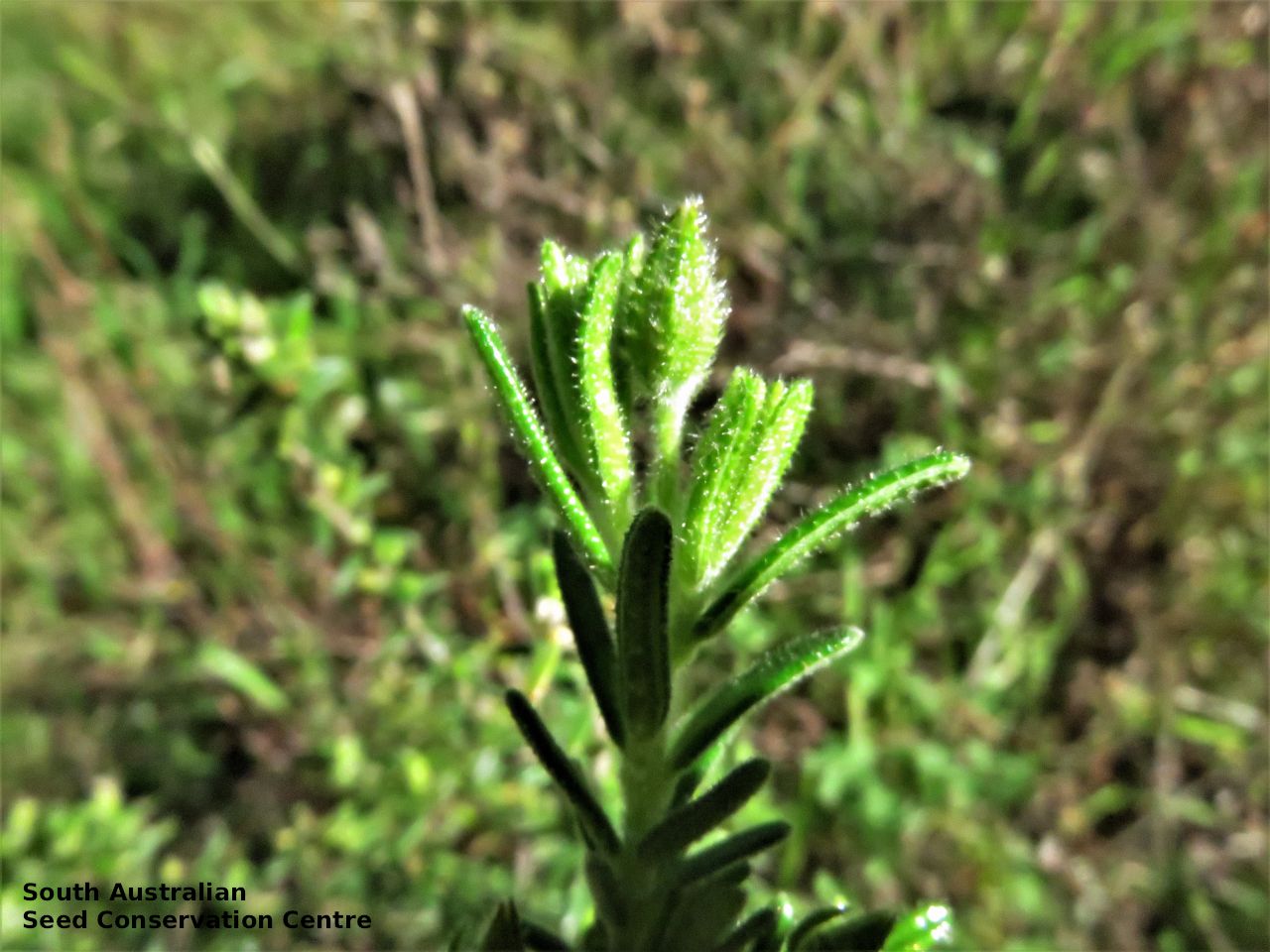
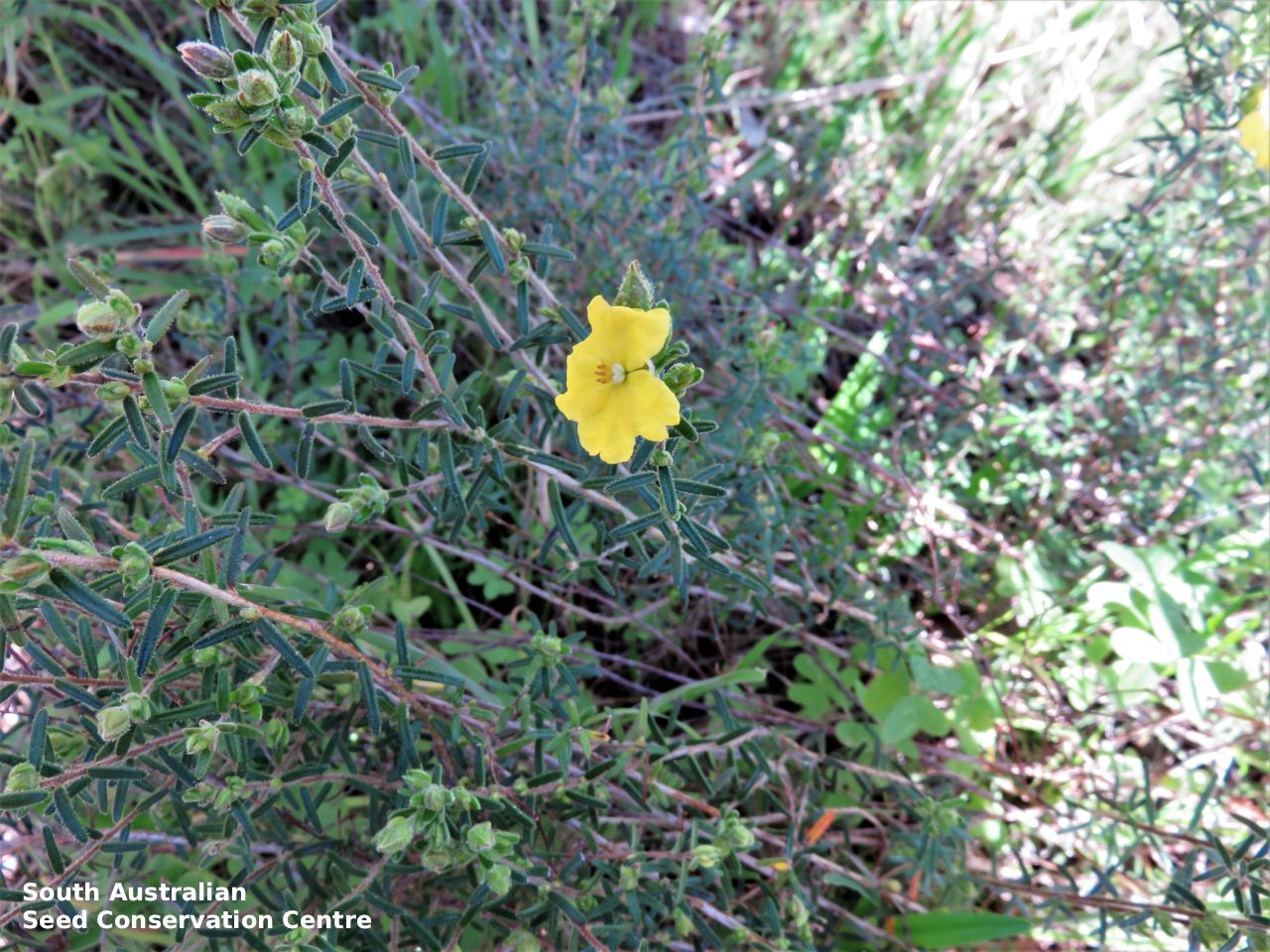
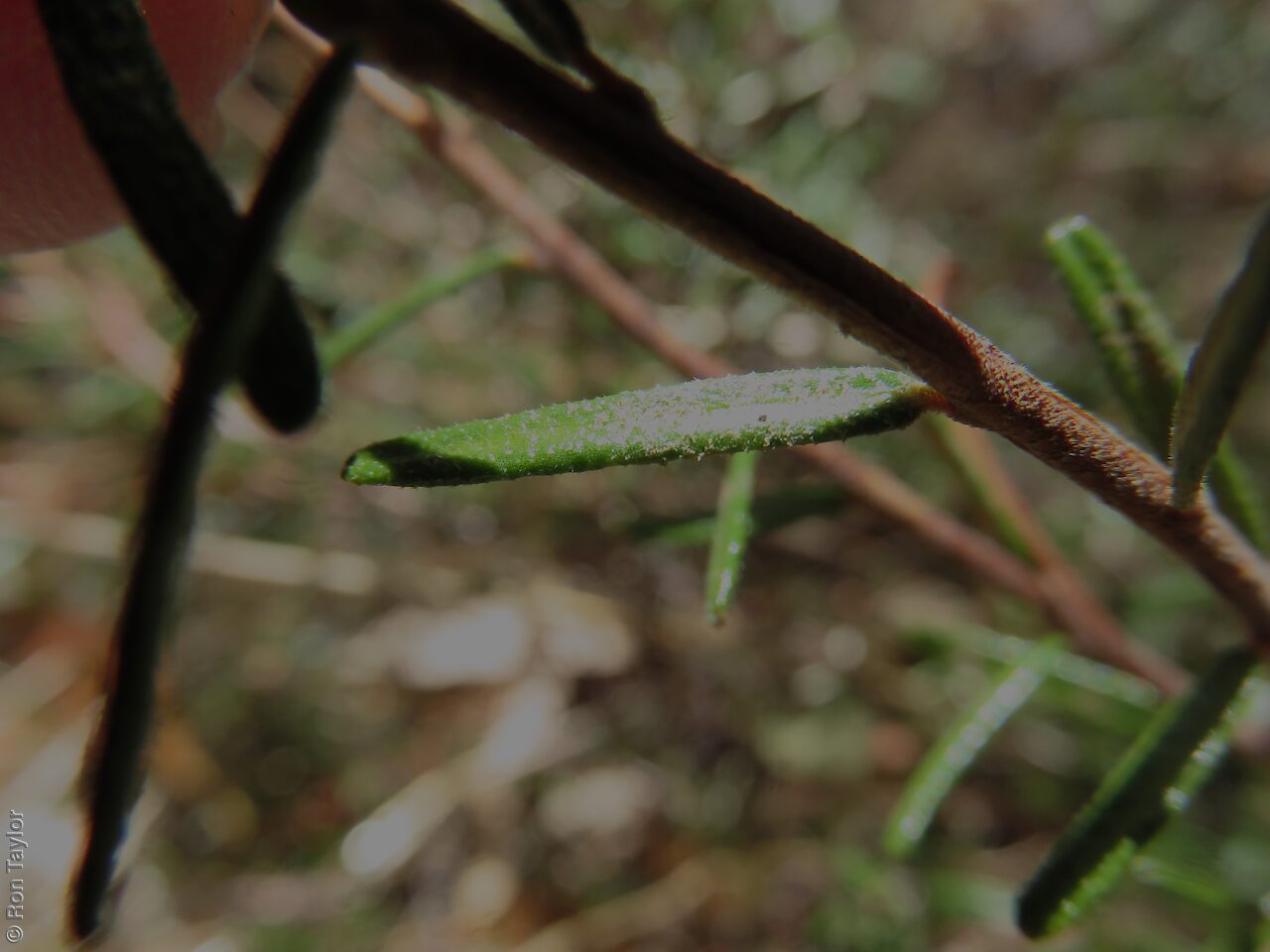
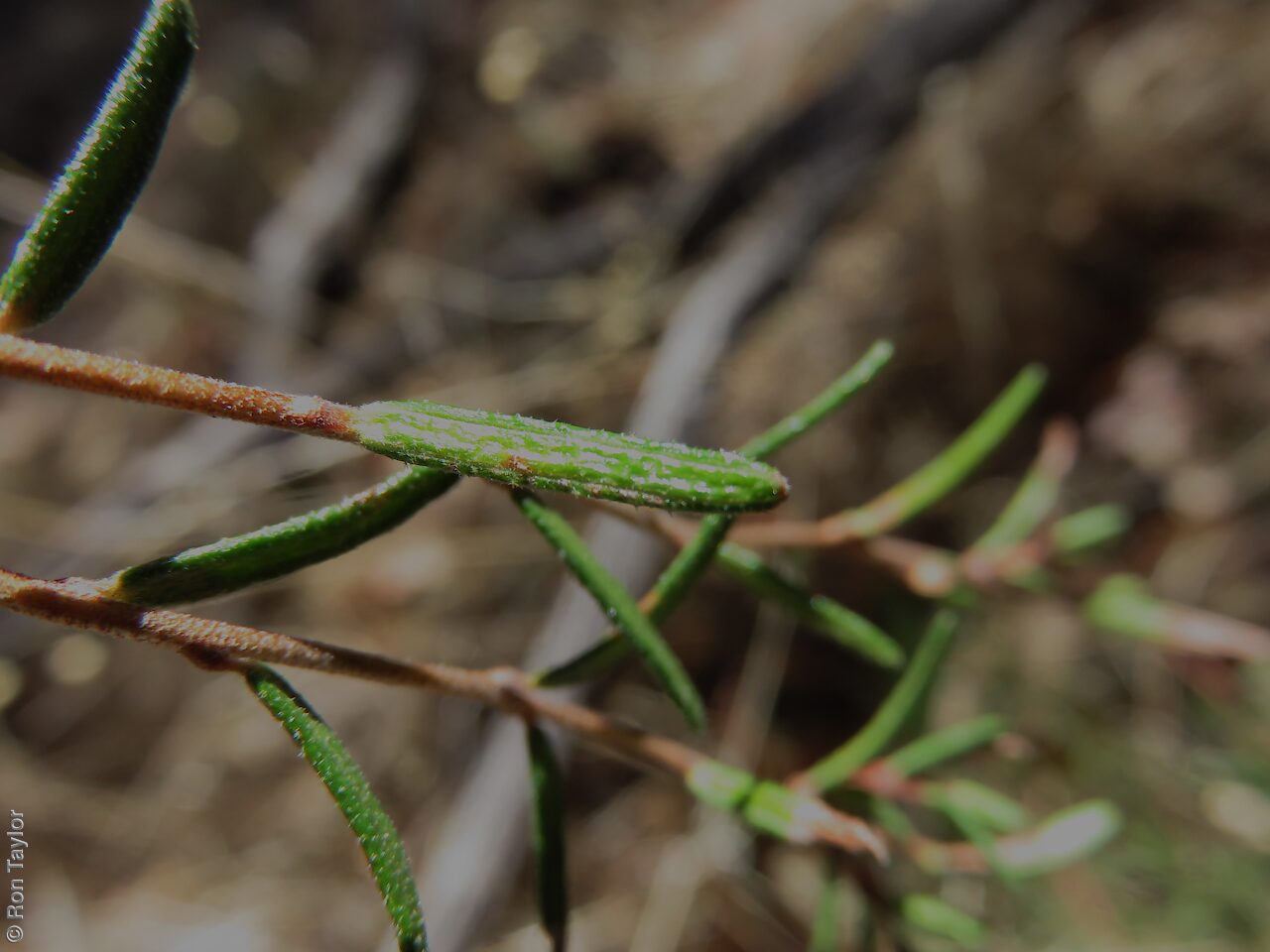

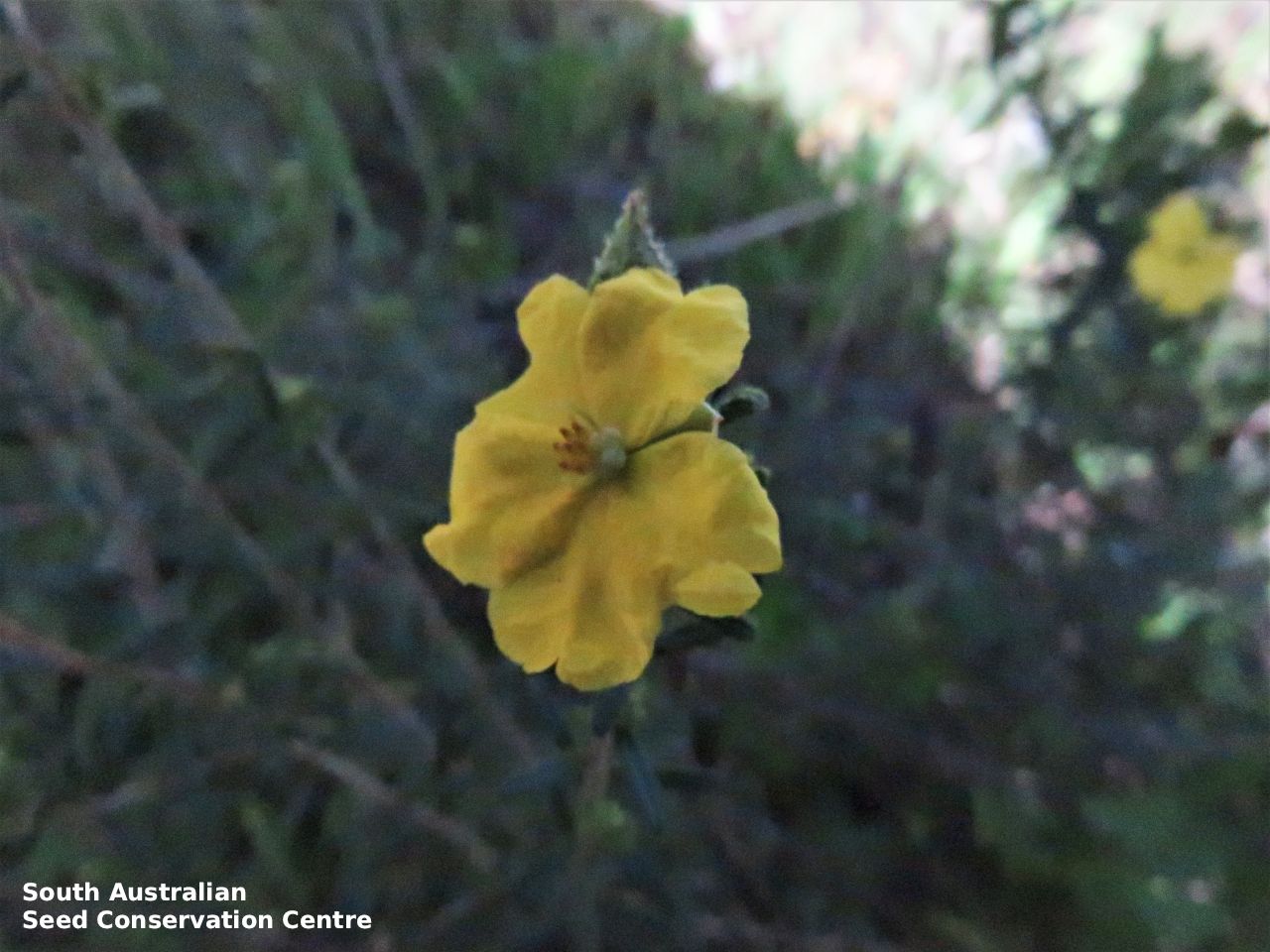
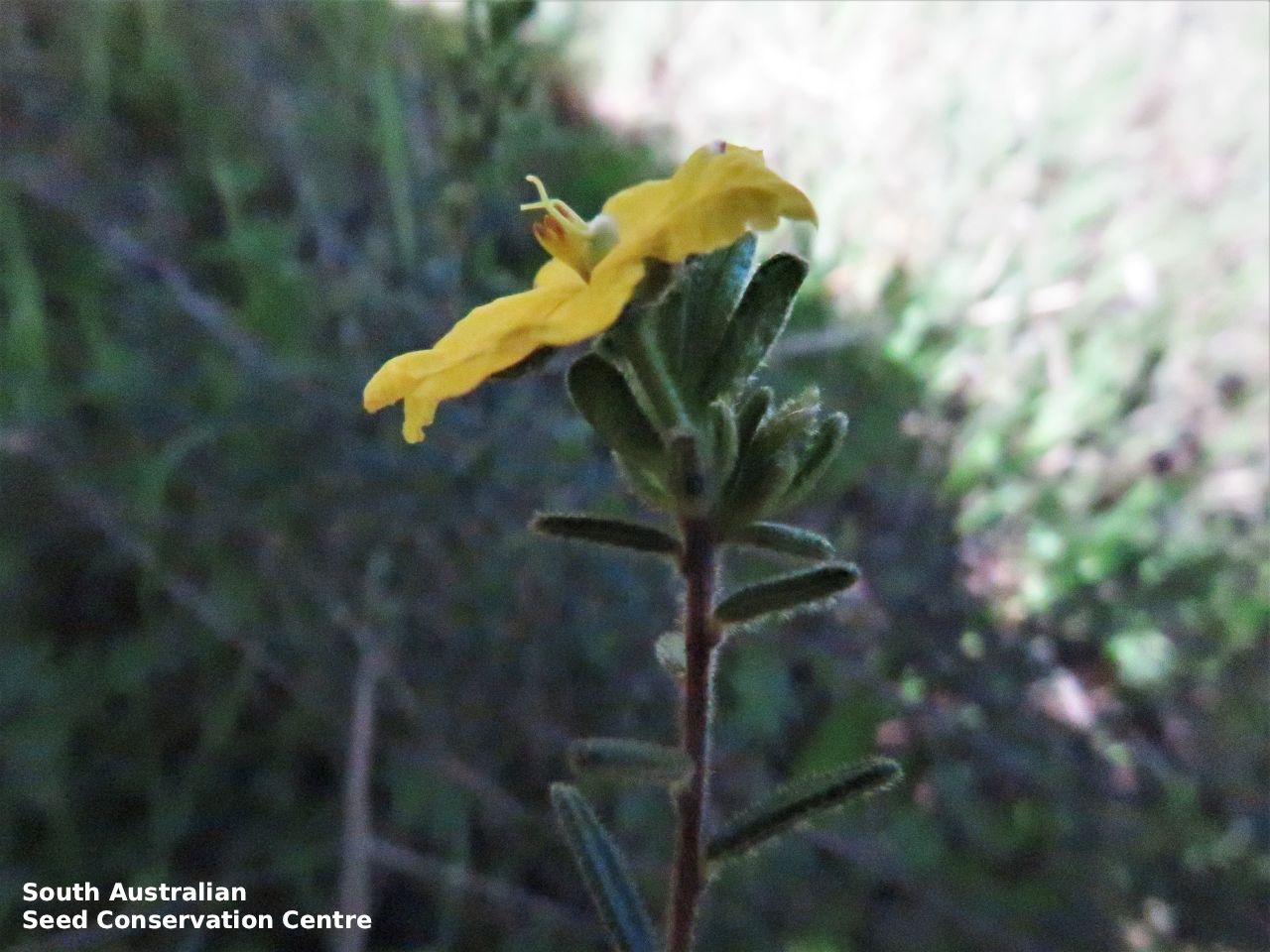
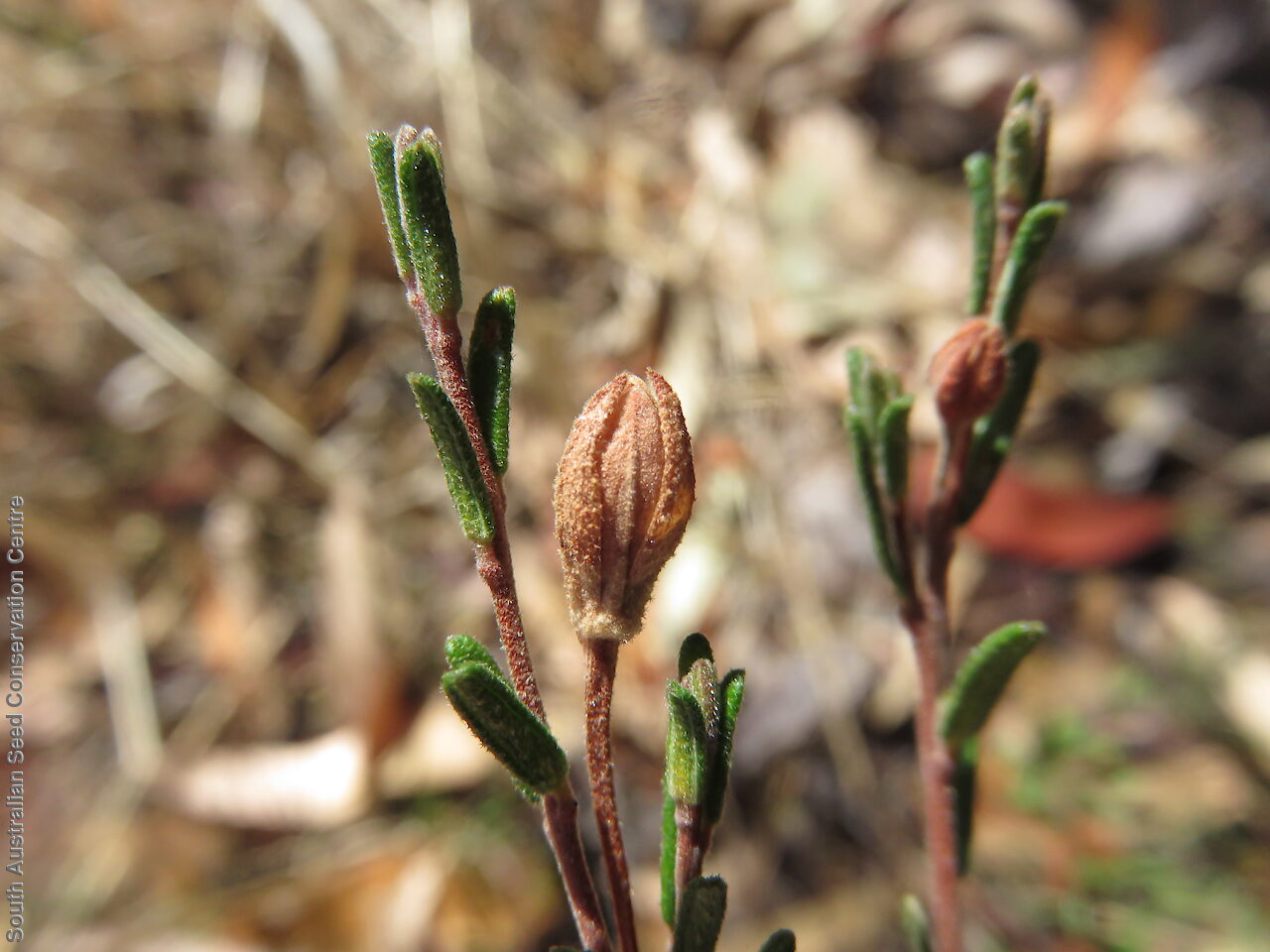


Prior names
Hibbertia stricta var. canescens, partly
Hibbertia stricta, partly
Hibbertia stricta var. stricta, partly
Common names
Lumpy Guinea-flower
Stalked Guinea-flower
Etymology
Hibbertia, named after George Hibbert (1757-1837), a London merchant who maintained a private botanic garden at Chelsea. Glebosa from Latin meaning round or lumpy, alludes to the uneven surface, particularly of the outer calyx lobes and is accentuated when dried which leads to a “bumpy” appearance.
Distribution and status
Endemic to South Australia and confined to the southern Mt. Lofty Ranges, growing on sandy clay or loam in open woodland. Native. Common in South Australia.
Herbarium regions: Southern Lofty, Green Adelaide
NRM region: Adelaide and Mount Lofty Ranges
AVH map: SA distribution map (external link)
Plant description
Shrubs to 50 m tall, at first sparse but becoming much-branched, spreading to decumbent; branches with prominent leaf bases not continued into decurrent flanges, sparsely hirsute, rarely pubescent. Flowers yellow, single, stalked and usually obviously leaf-opposed on distal terminal and axillary branches, This species is distinguished from H. australis by its apparently stalked fascicled hairs mainly on the central vein on the abaxial surface of the leaves and particularly the outer surface of the outer calyx lobes. The tissues below the hairs do not shrink as much as the glabrous areas in between, so that the leaves and calyx attain a lumpy appearance in dried material.
Seed collection and propagation
Collect seeds between October and February. Collect mature capsules that are turning a pale straw-colour and contain brown seeds. Place the capsules in a tray and leave to dry for one to two weeks. Then rub the capsules gently by hand to dislodge the seeds. Use a sieve to separate the unwanted material. Store the seeds with a desiccant such as dried silica beads or dry rice, in an air tight container in a cool and dry place. This genus tends to have low seed viability. This species has morpho-physiological dormancy and can be difficult to germinate.